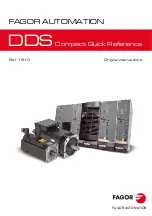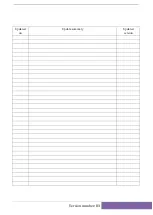
Mach-DSP User’s Manual
Document Number: MACH-DSP-9021
Page 2
www.ScannerMAX.com
Table of Contents
1.0
Introduction
2.0
Specifications, Dimensions and Mounting
3.0
Connector locations and functions
3.1
Power Supply
3.2
Analog and Digital Command input, and XY2-100 Interface Daughterboard
3.3
Status and control signals
3.4
Control Panel Serial interface
3.5
Test and Thermistor interface
3.6
Scanner interface
4.0
Fault monitoring, protection circuitry and indicator lights
4.1
Fault Detection
4.2
Fuses
4.3
Light Color and Meaning
5.0
Servo Overview
5.1
Servo Class, terminology, and configurations
5.2
Servo configurations possible with the Mach-DSP
5.3
Servo architecture and digitizing resolution
5.4
Dual Output Filters (low-pass, notch, or phase-lead)
6.0
Command Input waveforms and implications
6.1
Large-Signal and Small-Signal waveforms
6.2
Step waveforms
6.3
Raster waveforms
6.4
Vector waveforms
7.0
Mach-DSP Servo Control Application program
7.1
Setting up communications
7.2
Menus, toolbar, status area, and control parameters
7.3
Basic servo parameters
7.4
Intermediate servo parameters
7.5
Advanced servo parameters
7.6
Control-related (TTL Input and Output) parameters
7.7
Pangolin-only servo parameters
7.8
Saving and recalling scanner tunings from memory and files
8.0
Built-in Tools accessed using the Mach-DSP program
8.1
Test Signal generator
8.2
Oscilloscope and Analog Test Point (user-defined) Outputs
8.3
Dynamic Signal Analyzer
8.4
Error Modifier (nonlinear correction)
9.0
Servo Tuning Instructions
9.1
Equipment needed
9.2
Initial “PD” Tuning
9.3
Setting Position Offset and Position Scale
9.4
Going beyond PD – adding integration to accomplish PID tuning
9.5
Careful tuning leads to optimal performance
9.6
PDF configuration and tuning
10.0 RoHS, REACH and CE Compliance Statements
11.0 More Information, including Patents and Trademarks



































